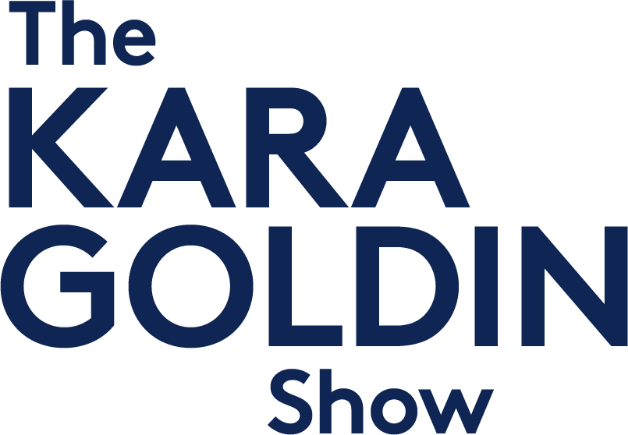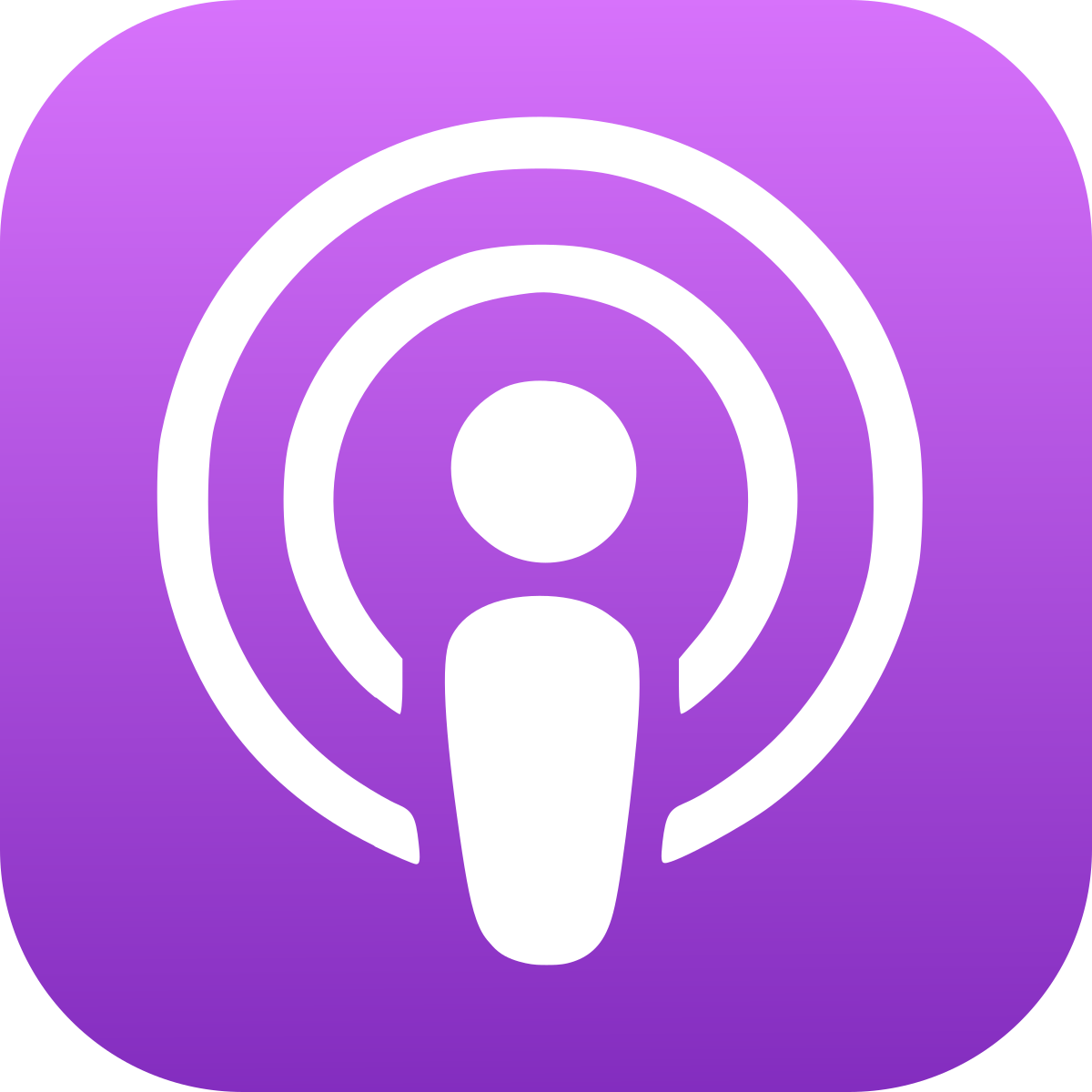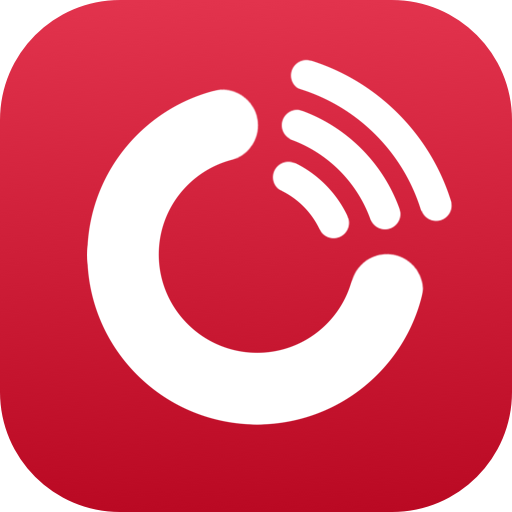Hayley Painter: Co-Founder of Painterland Sisters
Episode 672

On this episode of The Kara Goldin Show, we’re joined by Hayley Painter, Co-Founder of Painterland Sisters, the organic skyr yogurt brand bringing a fresh voice—and a deep purpose—to the dairy aisle. Born and raised on a fourth-generation regenerative organic dairy farm in rural Pennsylvania, Hayley and her sister Stephanie launched Painterland Sisters with one goal in mind: to help save their family farm while connecting consumers back to the source of their food.
During our conversation, Hayley shares the incredible story of launching Painterland Sisters, how they’ve grown the brand from a single product to a nationally recognized line, and what it’s taken to build a mission-driven business rooted in sustainability and transparency. We explore the power of showing up—in stores, in communities, and on social media—and why bridging the gap between farmer and consumer matters more than ever. Hayley also opens up about the challenges of entrepreneurship, her leadership lessons as a co-founder, and what’s next for the fast-growing brand.
Whether you’re a food lover, a founder, or someone passionate about regenerative agriculture and rural entrepreneurship, this episode is filled with wisdom, heart, and inspiration. Now on The Kara Goldin Show.
Resources from
this episode:
Enjoying this episode of #TheKaraGoldinShow? Let Kara know by clicking on the links below and sending her a quick shout-out on social!
Follow Kara on LinkedIn – Instagram – X – Facebook – TikTok – YouTube – Threads
Have a question for Kara about one of our episodes? Reach out to Kara directly at [email protected]
To learn more about Hayley Painter and Painterland Sisters:
https://www.linkedin.com/company/painterland-sisters/
https://www.linkedin.com/in/hayley-painter-b48a15174/
https://www.instagram.com/hayleymarie44/
https://www.instagram.com/painterlandsisters/
https://www.painterlandsisters.com/
Transcript
Kara Goldin 0:00
I am unwilling to give up that I will start over from scratch as many times as it takes to get where I want to be. I want to be you. Just want to make sure you will get knocked down. But just make sure you don’t get knocked out, knocked out. So your only choice should be go focus on what you can control. Control. Hi everyone, and welcome to the Kara Goldin show. Join me each week for inspiring conversations with some of the world’s greatest leaders. We’ll talk with founders, entrepreneurs, CEOs and really, some of the most interesting people of our time. Can’t wait to get started. Let’s go. Let’s go. Hi everyone, and welcome back to the Kara Goldin show. I’m so so excited to have our next guest. Here we have Hayley Painter, who is the co founder of Painterland Sisters, and it is an incredible brand, the organic sky yogurt brand on a mission to connect consumers with the land their food and the American farmer, and along with her sister, Stephanie Haley, launched this incredible brand to preserve their family’s fourth generation regenerative organic dairy farm in northern Pennsylvania. So she was just talking to me about how she and her sister split the business. Haley is actually in northern Pennsylvania, at the farm, and her sister spends part time there and also down at the distribution so it’s very, very cool that everything about the story and the deep rooted passion for agriculture and entrepreneurship and how it led to this incredible, incredible product, but incredible company. So I cannot wait to dig into Haley’s journey and her unwavering commitment to staying grounded in the values of what her family has done for years with, I guess, some extensions of it. So really, really excited that you’re here with us today. Haley, well,
Hayley Painter 2:13
thanks. I’m excited to tell you a little bit about my story, and hopefully it resonates. And every time I do this, I learn a little bit more about myself. So
Kara Goldin 2:20
that’s what I said. Like, being on on this podcast is like a therapy session that you don’t pay for, right? Like, you’re like, oh, wait, that’s so true. So I’m very, very excited. So okay, so let’s take it back. What inspired you? You graduated from college. You and your sister are a couple years apart, but you guys decided, let’s launch this incredible brand. Yeah,
Hayley Painter 2:47
well, it’s we launched it out of a need. So being fourth generation on a dairy farm, like we experienced and watched a lot of dairy farmers go out of business, we would ride around in the trucks with our grandpa and our dad and our, you know, aunts and our mom, and we’d go buy these old dairy farms that are just like abandoned. There’s no cows in it. There’s no cows out on the field. The pastures are starting to turn to brush land, which means the soils are starting to not be invigorated anymore. And we experience this, right? It was sad, but then we’d go up on the dirt road, get back to our farm, painter land farms, and get to be hanging out with all of our cousins and the animals and milking the cows and doing the good stuff, right? And so it would still be lively. But then when we leave the farm, we’d see that sadness again, right? They’re like, man, could you imagine, if you know we were here in the 70s, when all these farms were were just really going and just to put it in an extreme, there’s a straight stretch at our area. It’s a 15 minute straight stretch, and there was 100 dairy farms on that straight stretch in the 90s. Today, there’s not one dairy farm left. We’re now one of the last. We are the last dairy farm left in our township. So growing up in this really idyllic life, kind of thought everyone lived on dairy farms, and the whole world was like this. And as we got out into the world and we started experiencing it ourselves, it was our way of life was at risk because the milk market in our country is so unstable. I actually was talking to a group of third through sixth graders just this weekend. It’s called 4h and I was sharing to them, dairy farmers are kind of like, imagine if a teacher, it’s such a needed occupation. They go to school every day, but if they didn’t get enough money to teach, which we know they aren’t, but so much so that everyone says, Hey, come up with 20 other jobs, just so that you can afford being a teacher because you’re not making any money. That’s what a dairy farmer is like a lot of times dairy farmers, they work longer hours than most people like growing up. Work from like 3am until 9pm and then we would go. And we wouldn’t even be able to afford junk food, like we could not have Doritos. We couldn’t have fresh vegetables, anything like that. So we groom ourselves, um, which was fine, but for the amount of hours they put in they need, like dairy farmers have to have different jobs just to support this way of life, to support the rest of the world to provide this nutrient dense food. And so we needed to do something, because we grew up and wanting to have our kids and our family on this farm, but our way of life was at risk. And so we thought, what product can we make with our family’s farm, milk to stabilize it and to bring the farm to the world and the world to the farm? So we thought of cheeses and ice cream and everything under the sun, and yogurt was needed because there’s not a yogurt out there that I personally liked, so there is options for it. And also we knew that we can make one that was way more nutrient dense, which is what people are looking for and what they need, right? They should have a choice for the most nutrient dense options. And also yogurt, it’s really hard to do. Once you get into yogurt, you either make it or you break it. Why? Because people eat yogurt every single day. So once we get on the shelves, we’ll either be able to grow or we’ll go out of business. And so we knew that if we started a yogurt company, it was like the only option to be able to use all of our farms milk supply and our neighbors. So it would allow us to grow really fast. If we were successful and we didn’t have another choice but to start. So,
Kara Goldin 6:24
sky or yogurt? Can you talk to us about that? Because that’s a new term that I think not a lot of consumers know. Can you define that for
Hayley Painter 6:34
us? Yeah, so skier is what it’s called. You can go skier
Kara Goldin 6:38
yogurt. See, there, there, I even did not pronounce it correctly
Hayley Painter 6:43
for all those skiers out there, think of cold, right? So skier originates from Iceland. Skier actually means yogurt in Iceland. So it’s a more nutrient dense yogurt. It’s strained similar to Greek Yogur, except it’s higher in protein, lower in sugar. It’s packed with all the nutrients, right? Those Vikings, they needed a lot of nutrients back in the day, so Icelandic yogurt is packed with that. And so that’s why we chose skier, because it’s the most nutrient dense option we could think of. It’s also like, super velvety smooth our technique. A lot of Greek yogurts are gritty. I didn’t like that, right? That’s protein powder added to it. Our products here, you just take the water out, and you leave all the other micronutrients, whey proteins, everything in there, and it’s velvety smooth.
Kara Goldin 7:27
That’s amazing. So had you been eating this for years? Or how much did this product vary from what you had grown up with?
Hayley Painter 7:37
So we kind of just like we grew up with yo play. You know that very different. You
Kara Goldin 7:43
weren’t doing it. So, oh, that’s, that’s amazing. So you really did a brand extension from what it wasn’t like you were growing up with this either.
Hayley Painter 7:53
No, we grew up like we knew we didn’t like that kind of stuff, but we would make our own yogurt. And then I learned, like, after I graduated college, I actually went to New Jersey, and I made, I learned how to make cheeses and different types of yogurt. So I realized, okay, it’s not that I don’t like yogurt, I just don’t like the yogurt options in the store. And so we started, like, being able to realize what real yogurt tastes like, and it tastes good. And so they had, we had the different options we could choose from, but in Pennsylvania, there is actually a 10th generation Icelandic yogurt maker that just moved to the state a year beforehand, and we’re looking to partner with brands. So it really worked out. You know, some things are just serendipitous, and that’s one of them. I
Kara Goldin 8:37
love it. So you grew up on a regenerative dairy farm, and that is very, very rare for those who are maybe not that familiar with what that term means, too. Can you talk about that and why it is such a major component to what you guys do today?
Hayley Painter 8:57
Yeah, so we’re an organic farm, which means, you know, we value the land, and there’s different requirements we have to do, like having the cows on pasture. Regenerative is it’s giving back, and it’s making sure that each part of our supply chain and our like choices that we’re making as farmers, as food brands, is intentional, so that we can keep the nutrients throughout the entire place, right? So, for instance, a regenerative example on a dairy farm is making sure the grass the cows have fresh grass to graze. But then, as a regenerative brand, it’s making sure we’re choosing the techniques that keep the nutrients that come from the raw milk into the product, so choosing those nutrient dense options. So along the way, everyone throughout the system has has that choice. We’re giving back. We’re nourishing. We’re not just taking we kind of explain it like we’ve always been regenerative. We’ve on our farming practices. We just didn’t realize it, and that’s how some of these regenerative farms are. We. They’re able to amplify their voice and tell you what they’re doing. Also learn and change and add new technologies and and ways to even add more nutrients back into the to the choices that they have as farmers, food brands and even retailers.
Kara Goldin 10:13
So your sister is your co founder, and what was the point when the two of you got together and said, We’re gonna go and launch maybe not even this company. Maybe you were saying we’re gonna get this product out there, which I find that’s more common for people who wanna create entrepreneurial companies. They think about, do I actually have something that I think other people are going to buy right? And I think that that is probably more common than somebody just saying, I want to go be an entrepreneur. Maybe they do that and say that for a long time, but then they don’t actually have an idea for a product. So you, the two of you had this idea. How long did it take before you actually got it in the hands of consumers, and what was the first store or market, or where did you first get started?
Hayley Painter 11:09
Yeah, so it was quite a journey. We did a lot of planning ahead of time, because, like I said, we were trying to figure out, how could we use all of our farms milk, in case, you know, the market pulled out from under us tomorrow, we could use it all and get it out into the world. So we had to do something that could scale fast, so that helped, you know, figure out our options. And then once we figured out the yogurt that’s going to be the niche we really like, took a lot of time to make sure we were thinking through what tastes the best. How do you add more nutrients? Like, a lot like our product has cane sugar in it, for example. At the time, monk fruit and stevia were trending, but we knew our roots and our country roots, we wanted something we could make in our kitchen, and that’s cane sugar. That’s like an older way of making products, but you can do it in a very minimum way. So we’re a lower sugar product without that. We didn’t believe in monk fruit and Stevie. We don’t know how that’s going to digest in our bodies, and it didn’t fit with our branding and our purpose. And so we had to think through each of those choices when we were launching our product. Now we get the product like perfect. We had our perfect design and our blueberries and strawberries on our label, perfect. We’re ready to go now. We don’t have anywhere to sell it, and then it’s in the middle of COVID, and all of our labels get back order three months. And so our first product that we made was 2021 it was like it was right, getting into the cold season. It was November time, and we hand labeled 14,000 yogurts outside because it was cold enough that the refrigerator would or the yogurt would stay good. And I had a Subaru with an exhaust outfit at the time, and I would load those yogurts up, and I would bring it around to different stores, supermarkets, Stephanie and I, we would crash different board meetings if we would hear like the farmers were meeting, like, National Farm Bureau is meeting. We’re like, we’re going to be there, we’re going to give them yogurt, we’re going to tell them we need stores. And that’s what we did, until, like, farmers do you say what you need, and the communities will point you in different directions, and you’ll decide, you know, if you want to keep that direction or go a different one. And so we started meeting different retailers and groups, and we actually met a fourth generation Mennonite distributor out of Pennsylvania through this. And we started distributing our yogurt through the mom and pop shops the PA and then we worked a lot with the food bank, because, again, we our volumes weren’t large enough. We landed a deal with giant, which is our local like grocery store chain here that’s in like, every community. And then, like, three months later, we launched National with sprouts and natural grocers. So we got very fortunate. We had a need to move a lot of yogurt at once, and we just kept telling what we needed. And the right people came along, a little bit of, you know, hope, luck, a lot of serendipity, and a lot of hard work. And then we finally got that off the ground in March of 2022 we sold our first cup of yogurt. Three months later, we were national and we were off to the races. That’s
Kara Goldin 14:15
amazing. So how different is your packaging today from when you first launched,
Hayley Painter 14:21
it’s not crazy different. Like, the name yogurt is actually like, double as big, because we didn’t think that was as important as our label. And so we, like, we tweaked everything, made them a little bigger, a little smaller. We actually added Stephanie, and I’s picture to the side of it. The importance of consumers knowing we’re not just like this big box brand or one of the like three companies out there that own dairy. We’re like real people. We have a real story. And so that was a big differentiator. We added our regenerative icon to it, and we made all the colors just a little brighter, so it’s not too. Far off, but, man, it takes a lot of sisterly quirrels When you’re going through figuring out what you like and dislike about labels.
Kara Goldin 15:06
Yeah, definitely. So did you ever think that you were going to start a company with your
Hayley Painter 15:12
sister? We always thought that. We used to, okay, let me paint the picture. We’re on top of a hill, but still pun intended right. Future is what we needed to do
Kara Goldin 15:26
for the painter, sisters, sisters,
Hayley Painter 15:33
13 cousins and our uncles and our cows, and so we’d go on hikes, and we’d be like, All right, we’re gonna sell this, and we’re gonna have a farm shop, and we’d have lemonade stands. And farmers are entrepreneurs, and so we just thought, okay, what are we going to do with the farm? What’s our journey on it? So we always knew it. We just didn’t quite know it was going to be a national yogurt. We kind of thought it was going to be a local thing, but the need was much greater for that. We had a national supply of milk. So now here we are, a national yogurt brand telling the importance of why everyone should know their farmer and not all food is created equal.
Kara Goldin 16:11
So actually making space right for you inside of a store, they have to take away space from someone else, right? Because you never see these empty shelves. So I think a lot of people don’t really understand how hard that is, and the cold box is like gold, right? You it’s very, very difficult. So I think that that speaks volumes, that you did it so quickly that this is such, you know, a unique product offering, but also it tastes great. And you guys found that hole in the market. How many SKUs did you start with? And what were those? What were those SKUs? And how has that changed over time?
Hayley Painter 16:58
We started with five SKUs. They were all single serve, like your tiny little yogurts. We had a plain one. We had strawberry meadowberry, which was named after my sister’s daughter, meadow it’s all the berries you find in a meadow. Blueberry lemon. At the time, it was the first national blueberry lemon yogurt on the market. So, like the big players, didn’t think of that combo. So we came in hot there. So we had the traditional vanilla, and we had our spin on it right between the meadowberry and the blueberry lemon. And all of our packaging was hand illustrated. So it was these two girls like dancing in the sunset, and it looked very different than the typical packaging on the yogurt shelves. A lot of the yogurt brands, like, real dairy brands, they’re older, so they honestly, they’re marketing to men. We’re a young woman company. We’re marketing to women. So we took a no out of the alternate dairy section, because they were doing it fun. Like, think of Oatley. Think of like, all those alternate yogurt brands, like, They’re fun. They’re marketing to women. And so we were one of the first brands who is a woman owned dairy brand marketing to women who do most of the buying. So our packaging had pink on the background, and like I said, two girls in dresses dancing on the front. We had a cow when you open the lid, wearing a flower crown. Like we connected with consumers and moms, and that that energy, but then that authenticity, right? Even they just knew it was a real product when you have a hand illustrated design on the front. Yeah,
Kara Goldin 18:30
definitely. So top selling skew today, has, has that changed? Yeah,
Hayley Painter 18:37
so we’ve launched Savannah speech since, named after Stephanie’s other daughter, and we have passion fruit, which was a little outside our comfort zone. And we launched two large multi serves, plain and vanilla, because everyone was like, We need a bigger size of it. So now the two multi serves are definitely the top sellers. Our single serve vanilla is still just growing like crazy, but Savannah speech came in and is really racing in there with our small vanilla bean. And we’re excited to keep, hopefully launching new flavors this year. How do
Kara Goldin 19:09
you know that you’re on to something when you’re launching? I think that you know, it’s, first of all, there’s, there’s different steps, right? Every day is, you know, there’s cycles that come along the way where you hit these milestones. You can either look at it from a revenue standpoint, or how many stores, I mean, I’ve seen multiple people do it multiple ways. But what’s the point where, you know, okay, I think we’re going to make it right. Because this is still, I remember those early days of hint where, you know we’re getting it into stores and and then we hear from another store, like, you suck, right? Like nobody wants this or whatever. And then this other store is like, oh my god, we can’t get enough of it, right? So you’re hearing all these different like. Like, messages, right, that are coming at you, and then you just say, Okay, I gotta keep going. I just gotta keep running. But what was the point where you said, Okay, I think we’re gonna make it now, like, I think this is a real business,
Hayley Painter 20:17
yeah, so when we decided on the yogurt and actually picked our volumes and decided this is what we were going to launch, we knew we were going to make it before then we were like, should we sell me on a direct to consumer site and ship it and make cheeses and bottled milk and like 30 different products? That was our first business plan. And then we had a professional consultant come in through a grant, and they were like, you can’t have like, 30 different products and have them all be successful and, like, hit the growth. So we we, like, we knew what our goal was, which was to grow and use this milk. So once we, like, formulated our skier and the flavors, even before we sold it, we knew it was gonna make it like we had really aggressive projections even then. And each year we’ve passed our projections by so so much, fortunately. So that was, like the first stage, and then the second one was when we had all those yogurts without labels and we didn’t have anywhere to sell them. When we actually got our first couple sales, that was another big relief. Like, okay, we got the sales now and then, you know, we were first funded through a loan, just like a typical person, yeah, then we used all our loan, and we’re like, All right, now we need to get investors. That was the next phase of like, are we gonna make it? And we got investors in through crowdfunding and support, and now that’s stable. And so this is the first year we have sales. We have investors financially. So we’re just now it’s finally feeling like, Okay, we’re gonna make it. This thing is already taking off. We just have to keep propelling it in the right direction, and now we can focus on like amplifying our voice and our mission and our impact.
Kara Goldin 22:00
You sell on your website as well, but you’re also partnering with incredible companies like Instacart. And can you talk about that? And so how that’s made your logistics that much easier? Yeah,
Hayley Painter 22:15
so it’s like learning a whole new playbook, guys, a whole new terminology. It’s like we went to school to, like, learn how to speak Spanish, except you were learning how to speak the food industry. So there’s brokers and distributors and retailers and direct to consumer we didn’t know any of these terms when we started. We didn’t even know we were in the CPG space, which means consumer packaged goods. So we had to learn this whole playbook, and now we we’re here, and we’re in like retailers are most prominent way of selling, and the premium stores is where we had to sell to because our yogurts higher price point and then it’s perishable. So we haven’t really launched direct to consumer yet on our website. So Instacart spent huge because we first wanted to make sure we could be in in grocery stores across the country, so that everyone had the opportunity to eat this new trans dense food. So we partnered with the two biggest, you know, distributors, like a, you know, a normal food brand would do you want to find Kee. And then we started targeting our dream stores and accounts like Chicago land peats and fresh thyme, fresh market, natural grocers, air one in LA. So we started going down this journey and kind of checking off the list of where we wanted to be, but also needed to be to hit our minimums that we needed to make. And Instacart really amplified it because we couldn’t sell and we couldn’t distribute the products to people we wanted, and we had to ship the products to buyers and stuff like that, or to like you. So Instacart helps us do that, and we still use that today. You know, if I fly down to Texas to do a show and I forget to send myself blueberry, I’ll just Instacart myself some blueberry and then I’ll show up to the trade show, you know, pitch all these buyers my blueberry product, and they hopefully will buy it. So it’ll amplify. So it’s pretty cool to have it accessible across the country, so we can do business and tell our story to everybody. That’s
Kara Goldin 24:17
great. And you’re distributing through major brokers, unified Kee, you talked about them, and then also through some dairy brokers too. Do you feel like you have to build out your team to merchandise to all these various places across the country? I mean, what? What kind of challenges have you run into there as you grow? Because growing is great, but to keep growing, you have to make sure that your product stays in stock and that they’re not taking it out of the cold case and putting it you know where it’s going to go bad all of these things. You have to watch it right. And I’m sure you’ve experienced that, but just you. Painting the picture for people who are listening to this, what are some things that you’ve learned and in terms of growing the brand?
Hayley Painter 25:08
Yeah, being a perishable food company is so difficult, especially as an underdog, like no one quite cares, because it’s like this person coming out of left field, and if they mess it up, it’s not like anyone’s losing anything other than the food brand. Us, the entrepreneur. And so it was a battle at first to get people to, once we sold it into the stores, to get them to bring it from their back cooler to actually on the shelf so people could buy it. And now, like the distributors will sell, like, we’ll sell our yogurt into them, but then they might not drop it by the grocery stores, which they’re supposed to. And so we built this team, and there’s multiple different things we do, but we just have to, like, keep checking the grocery stores. If it’s not in there, it’s not on us, and we have to figure out what’s going on, find the gap and the problem. Sometimes do other people’s jobs or show them how to do it and why it’s important, and just keep reminding them, Hey, we gotta keep the yogurt on the shelves, because if we don’t, then we’re gonna go out of business, and this isn’t gonna be good for any of these farmers. So it’s a constant battle. I mean, anything could go wrong. Think about when you go to the grocery store, if you get it off the shelf, and then you put it in your car and then you put it back, because after an hour of shopping, you decide you didn’t want the yogurt, that product is probably bad. Now, so there’s so many things that could go wrong with perishability, and you just have to keep figuring it out be progressive and have positivity, right? You’re gonna get complaints, but see, we like to see each complaint, and each consumer see where they’re at, share with them our transparent story. We don’t want to hide anything, and then they’ll have a good experience next time.
Kara Goldin 26:51
Yeah, definitely. So what’s the one thing that maybe there’s multiple things that no one ever warned you about this. I mean, you’ve got a great idea. You want to build a company with your sister. You want to show the the holes in in the yogurt market. But I guess you talked about it slightly. But what are, what are the hardest things that you’ve encountered and really making all of that happen.
Hayley Painter 27:24
Think the hardest thing is knowing we’re putting all this hard work in, and there’s no promise for it to make it right, and no platform to support you on that you actually have more people rooting against you sometimes than for you, especially at the beginning. So then the larger you get, the more you get your story out there, the more you have people rooting for you, checking on those processes. So when someone is doing something wrong, like, it’ll they’ll do it right. The next time right, you have more people on your team. And so that’s the hardest thing, is just wondering if you’re going to get through this phase, this season, like, if it’s the right move, and why is it also, like, is it also based on your mission? Are you just doing it because you have to do it? So we don’t ever want to be put in the corner and do something, because that’s how it is in the industry. Or you have to, because if you don’t, then you’re going to go out of business. Whenever we get that advice, we’re like, No, we’re not going to compromise our mission. For instance, our investors. People told us, like, we had to use venture capitalists in order to fund our business, and we have to grow our company and a goal to sell it to one of the top guys in order to make a return for our investors. And we said, no, like, if it’s a successful company, like, our investors will get the return on that, and we only want to work with investors that are like that. And so we started a we funder campaign, a crowdfunding campaign, and that was so incredibly hard, and everyone thought we were going to fail, even some members of our team. But, you know, we stayed together, and we got through that, and we got our company the credibility it deserved so then the next round of investors could see us, and our voice was amplified.
Kara Goldin 29:05
How much did you guys raise in in the crowdfunding,
Hayley Painter 29:09
we raised the max it could before getting audited, like 1.2 million or something like that.
Kara Goldin 29:14
Incredible. That’s amazing. And did you do that all through the social platforms? Or how did you Yeah, we
Hayley Painter 29:21
did it through. We launched it on we funder, which is a third party platform. We shared it on our social media pages, and we thought, bam, that’ll be good. We’ll launch it, and two months later, it’ll be fully funded. We had that thing open for eight months. We had to relaunch it. We kept it open, but we had to redesign the whole page, break it down and educate people what it was we were doing and why we’re pitching. And we went like 10 steps beyond. We started holding in person, person pitch meetings like back in the 80s, like entrepreneurs would do. So we would tell people we’re meeting here to tell you why you can invest in our company. And. Come and enjoy and you can have a coffee and a yogurt. And so we had these in person investor meetings, and everyone said, No one does that anymore, but we did that to show that trust. And after eight long months, we finally got it funded, but it was the hardest thing we’ve ever did, but also the most worthwhile, and it was completely against the norm.
Kara Goldin 30:22
It’s It’s incredible what you guys have done. So what are you most excited for the Patreon sisters brand? What are you most excited for coming up
Hayley Painter 30:33
and well, you know, our yogurts now in every single state it’s been there. We’re going to continue to grow, grow and launch new products. And the coolest thing is, like getting to talk and tell our story like we are doing here, and having that amplify, and hopefully seeing this like difference we want to see in the world where, you know, farmers can make a living and be proud of it, right, and consumers and farmers can connect, and you’re starting to see that more. You’re seeing the trends on social media where everyone wants to know who their farmer is and why and where their food comes from. And I’m just hoping that there’s going to be this stability in our system one day where farmers can be really appreciated financially, but also like socially, because they’re the true backbone of our country. So I’m excited to keep getting on platforms to sharing it. We got Forbes 30 under 30 this last year. We’re in country living, and it’s just like those are dream goals that we had when we were little, and now we’re here doing that and amplifying these messages. I
Kara Goldin 31:38
love it. So Haley, it’s been such an incredible and inspiring conversation. I love what you and your sister are doing in building this incredible company. Patron lens sisters, products are amazing. They’re so yummy, and everybody needs to check out what you’re doing. We’ll have all the info in the show notes, but you’re also available in most stores now, so definitely need to check out everything again. It’s Haley painter, co founder of painterly sisters. Excellent name for sure. You can’t forget it. So thank you again, and good luck with everything.
Hayley Painter 32:19
Thank you so much. I appreciate it. Thanks again for
Kara Goldin 32:23
listening to the Kara Goldin show. If you would please give us a review and feel free to share this podcast with others who would benefit. And, of course, feel free to subscribe so you don’t miss a single episode of our podcast. Just a reminder that I can be found on all platforms at Kara Goldin, I would love to hear from you, too. So feel free to DM me, and if you want to hear more about my journey, I hope you will have a listen or pick up a copy of my Wall Street Journal, best selling book, undaunted, where I share more about my journey, including founding and building hint we are here every Monday, Wednesday and Friday. Thanks for listening, and goodbye for now you.
People Also Liked
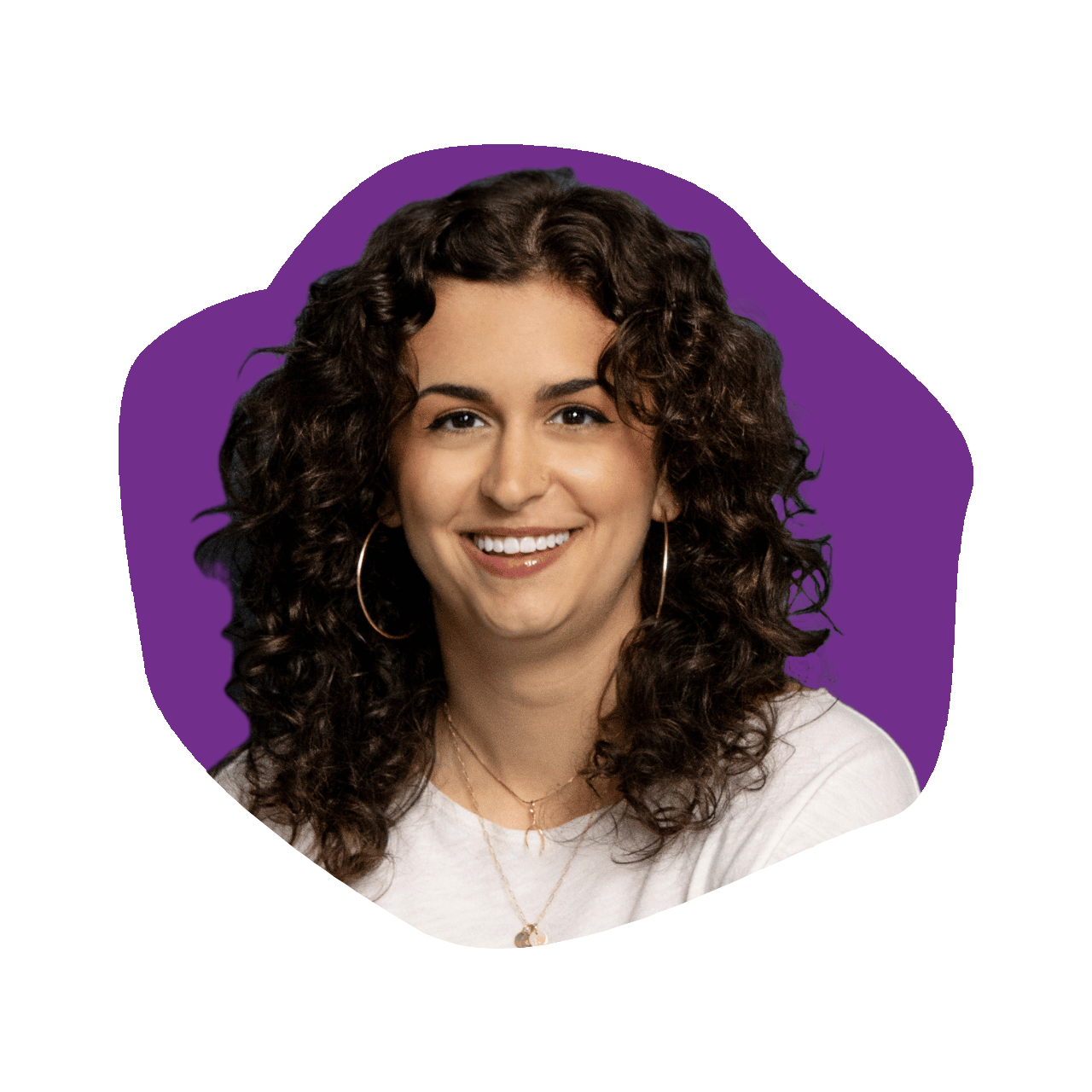
755
Gabi Day: Founder & CEO of Bright Body
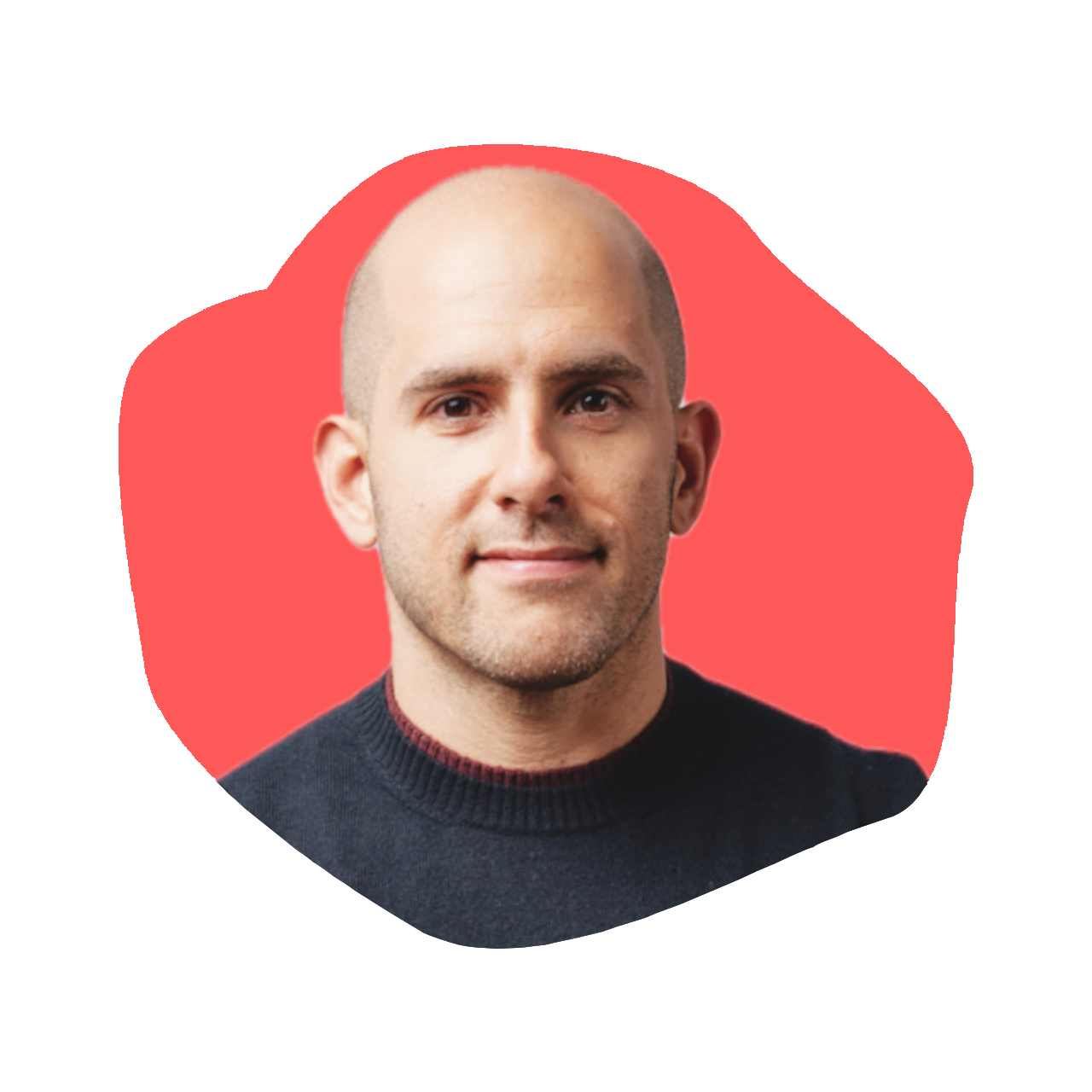
754
Nicolas Jammet: Co-Founder & Chief Concept Officer of Sweetgreen
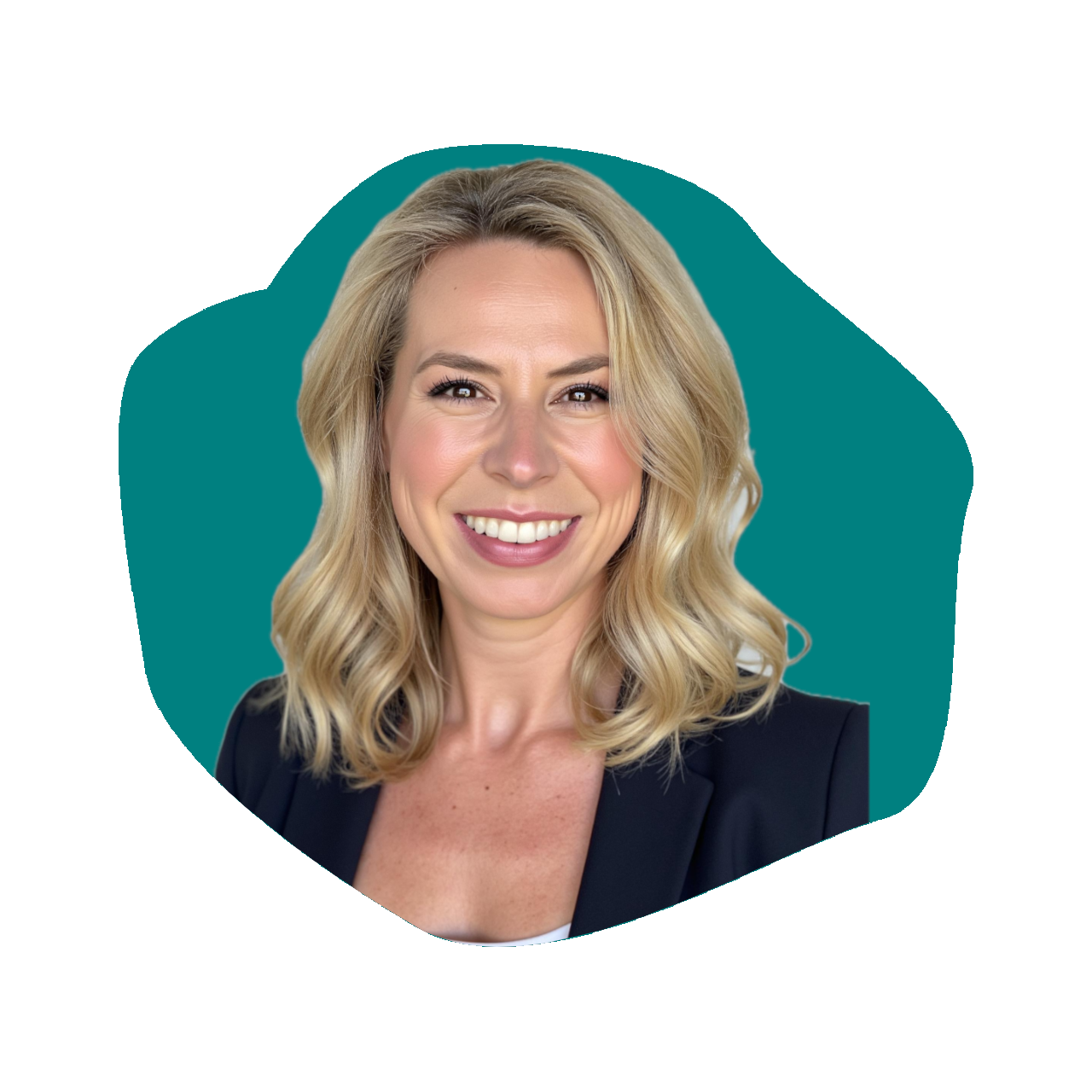
753
Katya Eckert: Founder & CEO of A DOMANI
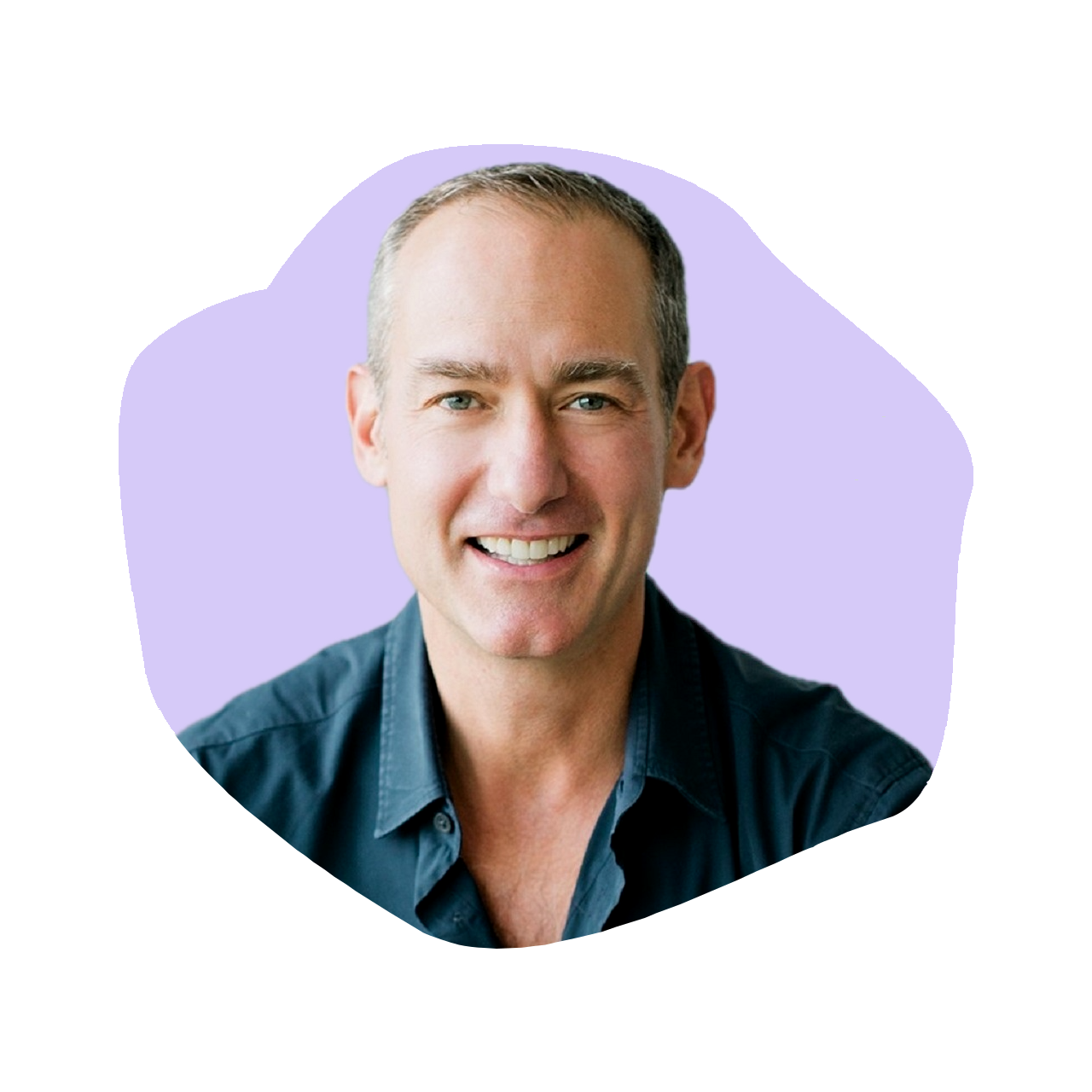
752
Mark Rampolla: Author of An Entrepreneur’s Guide to Freedom and Founder of ZICO

751
Deborah Pagani: Founder of Deborah Pagani Beauty
